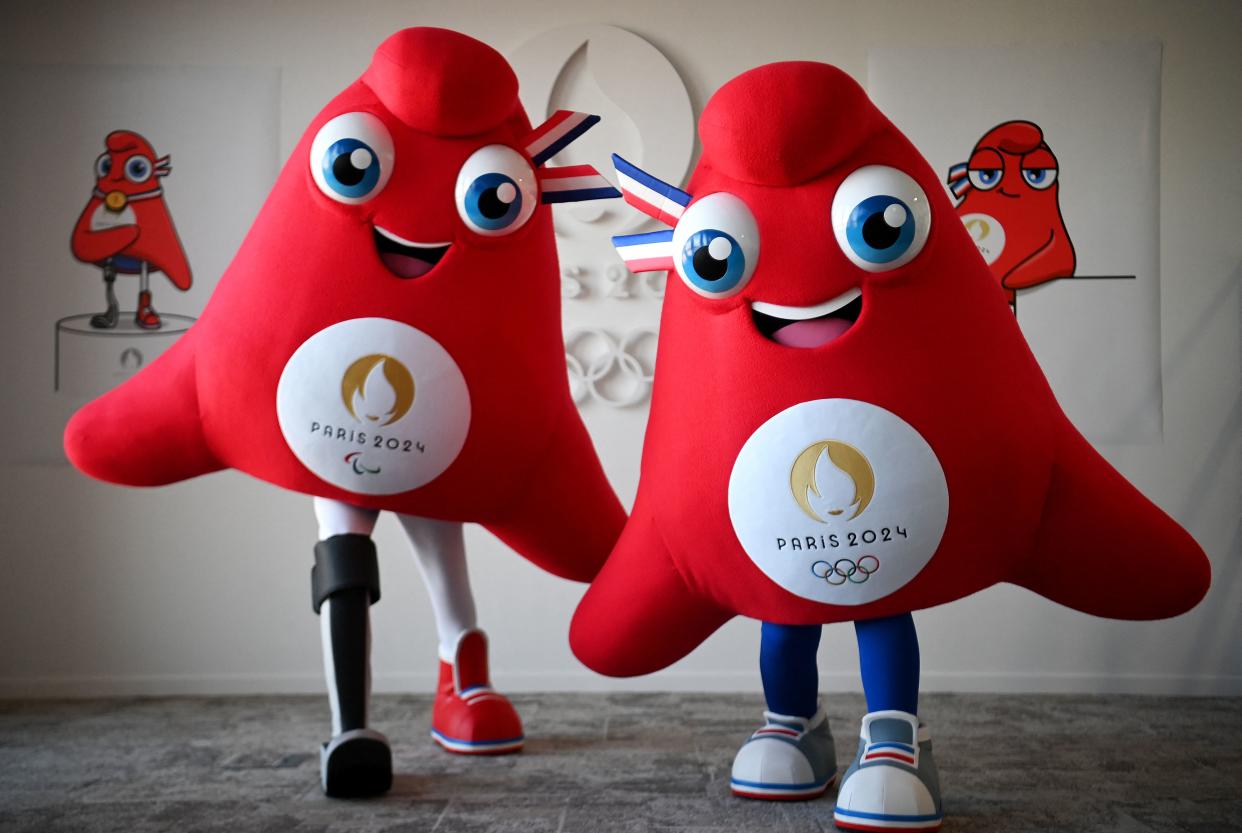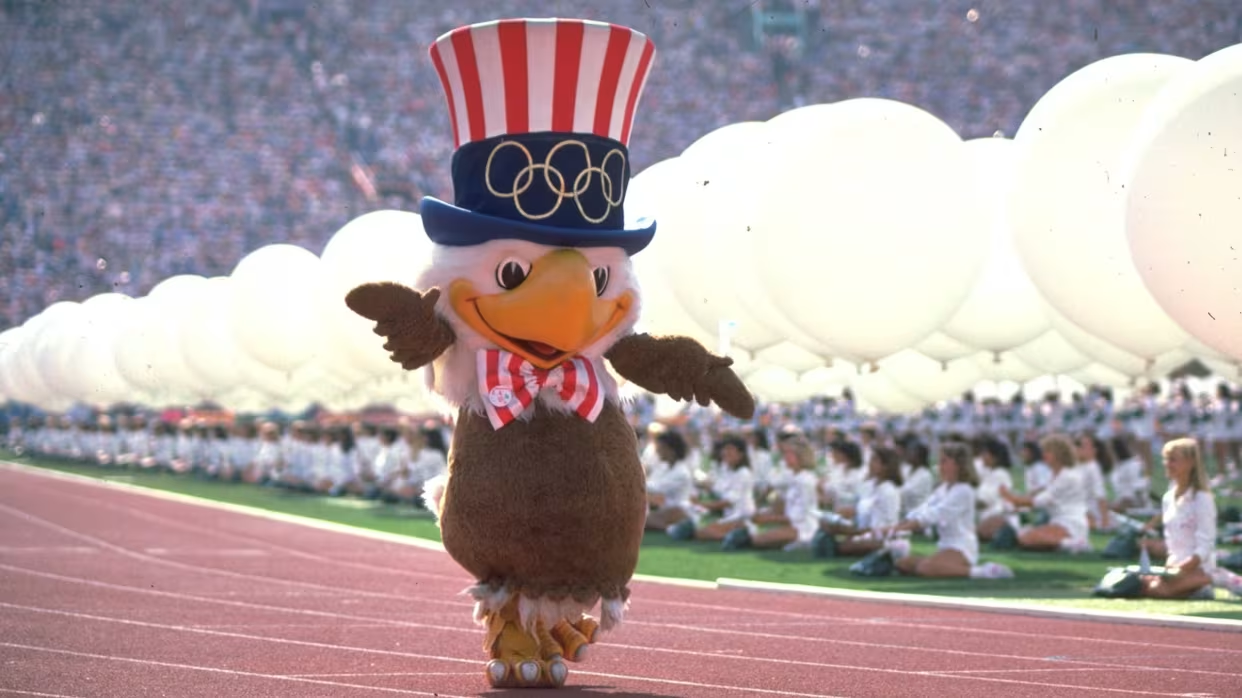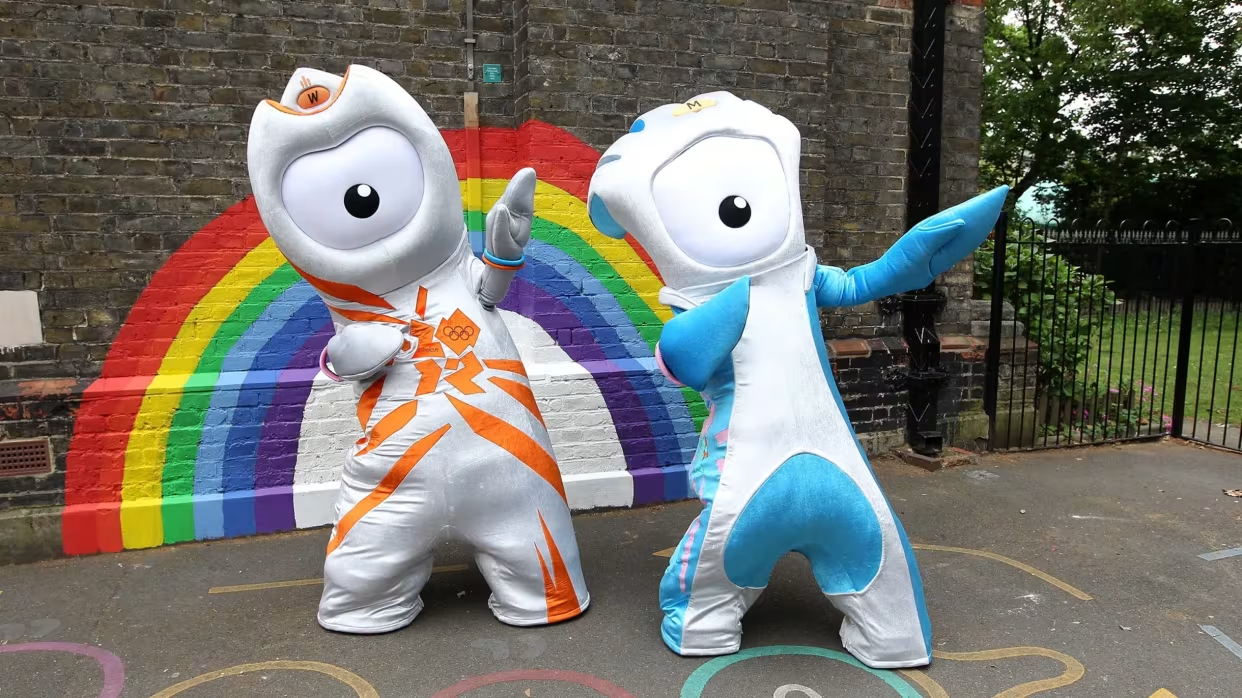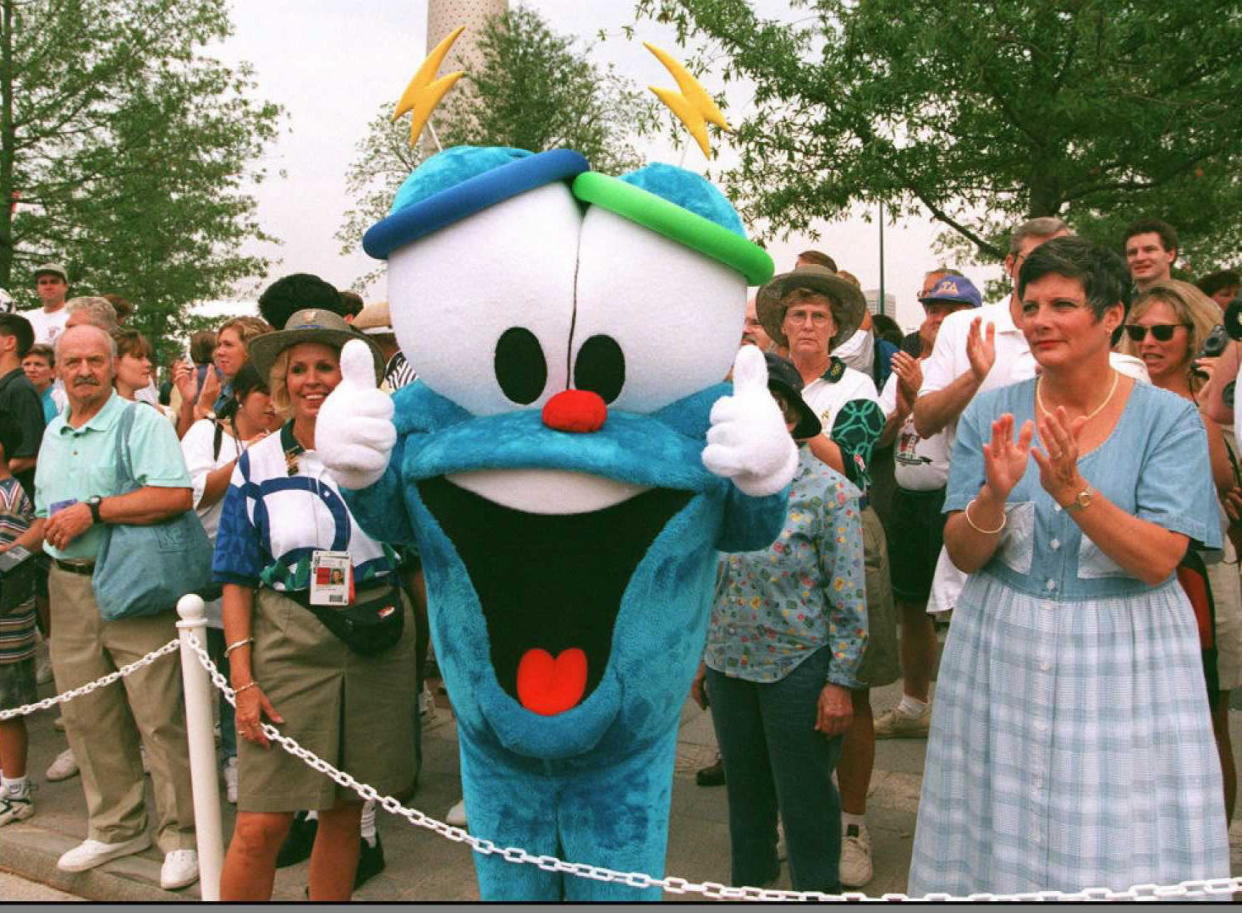2024 Olympics: What’s a Phryge? The Paris 2024 mascots, explained

You’re going to see a lot of Les Phryges over the next few weeks. They’re cheerful wide-eyed triangles, puffy and red, and they’re the mascots of the 2024 Paris Games. Sure, they look like friendly Minion-esque scamps, but they carry deep connections to French history and culture. Oh, and they’re for sale in plush form, of course.
The first official Olympic mascot dates back to the 1968 Grenoble Games in France when "Shuss," a big-headed fellow on skis, debuted. Later Games took the mascot creation more seriously, and their creations inspired everything from T-shirts to toys to cartoons.
The Phryges (pronounced “FREE-jess,” or, if you’re leaning American, “fridges”) are the latest in the long line of mascots designed to embody both free-spirited joy and national pride. Past efforts have varied wildly in achieving this mission, such as:
The cutesy sasquatch and sea bear from Vancouver 2010:

The intensely patriotic eagle from Los Angeles 1984:

The highly collectible panda from China 2022:

The horrifying cyclopean aliens from London 2012:

And the flat-out bewildering “Izzy” from Atlanta 1996:

Les Phryges derive their name from the phrygian hats favored by rebels during the French Revolution, and given how often France explodes into revolt, the phrygian hats are never out of fashion.
“Rather than an animal, our mascots represent an ideal,” Paris 2024 President Tony Estanguet said. “Since it is familiar to us and appears on our stamps and the pediments of our town halls, it also represents French identity and spirit.”
One of France’s most famous paintings, Eugene Delacroix’s “Liberty Leading The People” (1830), features the very symbol of Liberty itself wearing a phrygian hat as she inspires the masses to overthrow the repressive Charles X. Paris 2024 even referenced the painting when introducing the mascots, promising a “revolution in sport”:
The Olympic Phryge and the Paralympic Phryge are taking the lead of a tribe which always has its trainers on 👟
What could be better than little Phrygian caps to lead the revolution through sport and accompany us to the #Paris2024 Games! pic.twitter.com/hUjFI09zZM— Paris 2024 (@Paris2024) November 14, 2022
Marianne, France’s national personification of liberty and revolution — sort of a more hands-on Statue of Liberty — is often depicted with a phrygian hat. (The official logo for the Paris Olympics subtly references Marianne, if you look closely.)
But violent, passionate revolution doesn’t quite fit with the Olympic charter, so Les Phryges are a bit more family friendly in their insurgency. The two primary Phryges have their own identities: The Olympic Phryge is “smart,” with a "methodical mind and alluring charm," while the Paralympic Phryge is “a party animal, spontaneous and a bit hotheaded.” The Paralympic Phryge sports a prosthetic running blade, the first Paralympic mascot to feature a visible disability since Lillehammer 1994’s “Sondre.”
Les Phryges’ marketing effort is well underway. Even if you can’t get to Paris, you can purchase your own Phryge plush ($29), magnet ($9), bucket hat ($21), or backpack ($116). Get used to seeing that shade of red and those wide eyes everywhere on TV over the next few weeks.
Even as the Phryges prepare for their turn in the spotlight, the next mascot duo is already waiting in the wings. Milo and Tina, a pair of stoats — small woodland creatures — representing the Milan/Cortina 2026 Winter Games were announced in February … but you still have a couple of years before they arrive.


